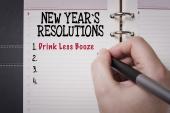J-Curve for Alcohol and AF Risk? UK Biobank Offers ‘Glimmer of Hope’
Large observational studies have their faults, but this data set supports low level intake of wine as “safer” than beer or cider.

Flying in the face of prior research, a large, observational study has shown that low levels of alcohol consumption do not appear to increase the risk of incident atrial fibrillation (AF) and may—in some instances—be protective. The hint of benefit, however, was specific to red and white wine consumed in fewer than seven alcohol units per week, whereas beer and cider intake at any level were associated with harm.
“Our findings, in this predominantly white British cohort, have important clinical and public health implications for the primary prevention of AF that should be explored in future studies,” Samuel J. Tu, BHlthMedSc (University of Adelaide, Australia), and colleagues write in JACC: Clinical Electrophysiology. The study findings also are being presented as a poster at the part-live, part-virtual Heart Rhythm Society 2021 Scientific Sessions, which kick off Thursday.
Though other studies have supported the idea that lower levels of alcohol intake can help prevent ischemic heart disease and coronary events, the association between drinking and AF has grown increasingly complex. While early reports raised alarms about binge drinking and “holiday heart,” subsequent research has added cautions for lower intake levels, even suggesting that there may be no safe threshold for booze when it comes to AF risk.
“This is a common question we face every day in clinic,” senior study author Christopher Wong, MBBS, PhD (University of Adelaide), told TCTMD. “Patients, as you'd expect, like drinking alcohol socially, and even if they're not drinking very high amounts, they still wonder whether they can have a drink a day or a few on weekends” without raising their risks for AF.
It does seem pretty clear, at the very least, that red and white wine are safer alternatives to beer and cider. Christopher Wong
“What's especially novel here is the observation that there may be a particular amount and type of alcohol that might actually reduce the risk for atrial fibrillation,” said Gregory Marcus, MD (University of California, San Francisco), who commented on the study for TCTMD. “There's been a lot of observational data to suggest that alcohol when consumed regularly and in moderation reduces the risk for myocardial infarctions, and diabetes, [yielding] a J-shaped association with mortality. But up until this point, to my knowledge, all of the studies examining alcohol as a predictor of atrial fibrillation either have failed to find any statistically significant relationships—and those are now in the minority of studies—or have demonstrated a heightened risk, even with low amounts of alcohol consumption.”
UK Biobank Drinkers
The current analysis looked retrospectively at 403,281 middle-aged adults (52% female) with no prior AF diagnosis who were enrolled in the UK Biobank study and followed for median of 11.4 years. Alcohol consumption was defined by the number of self-reported standard drinks per week, using the UK definition (one drink equal to 8 g [10 mL] of alcohol, which is lower than the US unit at 14 g). The specific type of beverage also was recorded.
The lowest AF risk in this cohort was seen among adults with fewer than seven standard drinks per week, with a nadir of risk at five drinks per week. Of note, consumption of one to seven drinks per week was associated with a slightly lower risk of AF than drinking fewer than one per week.
But while high consumption of alcohol in any form was harmful, specific beverages appeared to carry a different AF risk when consumed at moderate levels. Beer and cider were associated with AF as a linear dose-response, with the lowest consumption levels linked to the lowest risk. By contrast, red wine, white wine, and spirts had more of a curvilinear association, where AF risk was only increased to a statistically significant degree above 10, eight, and three drinks per week, with nadirs at five, four, and one, respectively.
To TCTMD, Wong stressed that “in terms of conclusiveness,” the study points to red and white wine being “safer” and beer and cider “being more harmful,” but the association for spirits was “less convincing.”
“It's possible that very low amounts of spirits, again, may not be harmful, but that risk tends to increase pretty quickly, so I'm less confident about the spirits association,” Wong said. “It does seem pretty clear, at the very least, that red and white wine are safer alternatives to beer and cider.” And while it’s possible that residual confounding is muddying the waters for other types of alcohol—people who reported predominantly drinking beer, cider, or spirits were generally more comorbid than people whose drink of choice was wine—the finding that wine consumption appeared to follow a J-shaped relationship with AF is consistent what’s been seen for other cardiovascular outcomes, Wong added.
Seeing a Glimmer
Marcus, who co-authored an accompanying editorial with Thomas Dewland, MD (University of California, San Francisco), stressed to TCTMD that the study is observational, with all the attendant problems of this type of analysis. But this is an area where randomized trials are unlikely, particularly in the primary prevention of a first AF event. It’s also very difficult to address the link between drink type and AF risk, he said, noting that the granularity on beverage type is a particularly welcome component of Tu et al’s study, although that introduces another set of questions.
I would say this is a glimmer of hope for low levels of moderate alcohol consumption, and perhaps especially low levels of regular consumption of wine in the general population. Gregory Marcus
“Previous studies have generally not been large enough to home in on both the specific quantity, as well as the particular type of alcohol that was consumed, and it's really hard to disentangle the alcohol component from the constituents of the drink that’s being consumed,” Marcus observed. “If there is indeed a protective effect regarding atrial fibrillation in those low amounts, it may not be the alcohol per se, but maybe some other component of wine.”
His “suspicion,” Marcus continued, is that the relationship between alcohol consumption and AF involves a lot of heterogeneity and idiosyncrasy from one individual to the next. “It appears very likely that there are some people who have an alcohol-sensitive form of atrial fibrillation, [whereas] clearly there are people who do not, who can drink like a fish, and they never developed atrial fibrillation,” he said. “So there are other factors, presumably genetic, but perhaps also some other environmental exposures, that almost certainly influence this alcohol-atrial fibrillation relationship.”
Marcus’s own research has looked extensively at the AF/alcohol link, even at very low levels of consumption, and how it relates to binge drinking. In the editorial, he and Dewland characterize Tu et al’s study as commendable, albeit at odds with another large study published recently in the European Heart Journal that failed to document a J-curve relationship.
Still, Marcus told TCTMD, “I would say this is a glimmer of hope for low levels of moderate alcohol consumption, and perhaps especially low levels of regular consumption of wine in the general population,” though not in patients with a prior AF diagnosis, in whom abstinence is still recommended.
“I've published pretty extensively on the bad news on alcohol as an important risk factor for A-fib, so clearly that still does exist, but it's been difficult to focus in on the lower levels of wine drinkers, for example, in atrial fibrillation research, especially in primary prevention,” he told TCTMD. “So this is an important new addition, more information, and serves to remind us to think carefully and not too simplistically about this relationship.”
Shelley Wood was the Editor-in-Chief of TCTMD and the Editorial Director at the Cardiovascular Research Foundation (CRF) from October 2015…
Read Full BioSources
Tu SJ, Gallagher C, Elliott AD, et al. Risk thresholds for total and beverage-specific alcohol consumption and incident atrial fibrillation. J Am Coll Cardiol EP.2021;Epub ahead of print.
Dewland TA, Marcus, GM. Can a drink a day keep the electrophysiologist away? J Am Coll Cardiol EP. 2021;Epub ahead of print.
Disclosures
- Tu reports no conflicts of interest.
- Wong reports support via a mid-career fellowship from the Hospital Research Foundation and a postdoctoral fellowship from the National Heart Foundation of Australia.
- Marcus reports research funding from Baylis Medical and being a consultant for Johnson and Johnson and InCarda, where he also holds equity.




Comments